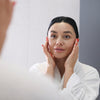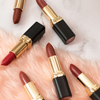Choosing the Right Lipstick Shade for Your Skin Tone

Choosing the perfect lipstick shade can be a daunting task. With countless options available, it can be overwhelming to find the right one that complements your skin tone. However, understanding the basics of colour theory can make this process much simpler. In this blog post, we'll explore how to select lipstick shades that flatter your unique complexion.
Understanding Your Skin Tone
Before diving into colour theory, it's essential to determine your skin tone. Skin tones can be categorised into three main groups:
Cool Undertones:
-
Veins appear blue or purple.
-
Jewellery tends to look better in silver.
-
Skin often has a pinkish or reddish undertone.
Warm Undertones:
-
Veins appear green.
-
Jewellery tends to look better in gold.
-
Skin often has a yellowish or golden undertone.
Neutral Undertones:
-
A mix of both cool and warm undertones.
-
Jewellery looks good in both silver and gold.
Color Theory and Lipstick Shades
Colour theory is the science of colour mixing and the visual effects of different colour combinations. When choosing lipstick, we can apply these principles to create harmonious looks.
Cool Skin Tones:
-
Complementary Colours: Opt for warm shades like orange-red, coral, and deep berry tones. These Colours will create a striking contrast and enhance your skin's natural coolness.
-
Harmonious Colours: Consider shades of pink, mauve, and plum. These Colours will complement your cool undertones and create a soft, sophisticated look.
Warm Skin Tones:
-
Complementary Colours: Choose cool-toned shades like berry, wine, and deep purple. These Colours will add depth and dimension to your warm complexion.
-
Harmonious Colours: Opt for shades of peach, coral, and terracotta. These Colours will enhance your natural warmth and create a sunny, radiant look.
Neutral Skin Tones:
-
You're lucky! Most shades will look good on you. However, you can experiment with both warm and cool tones to see what you prefer.



